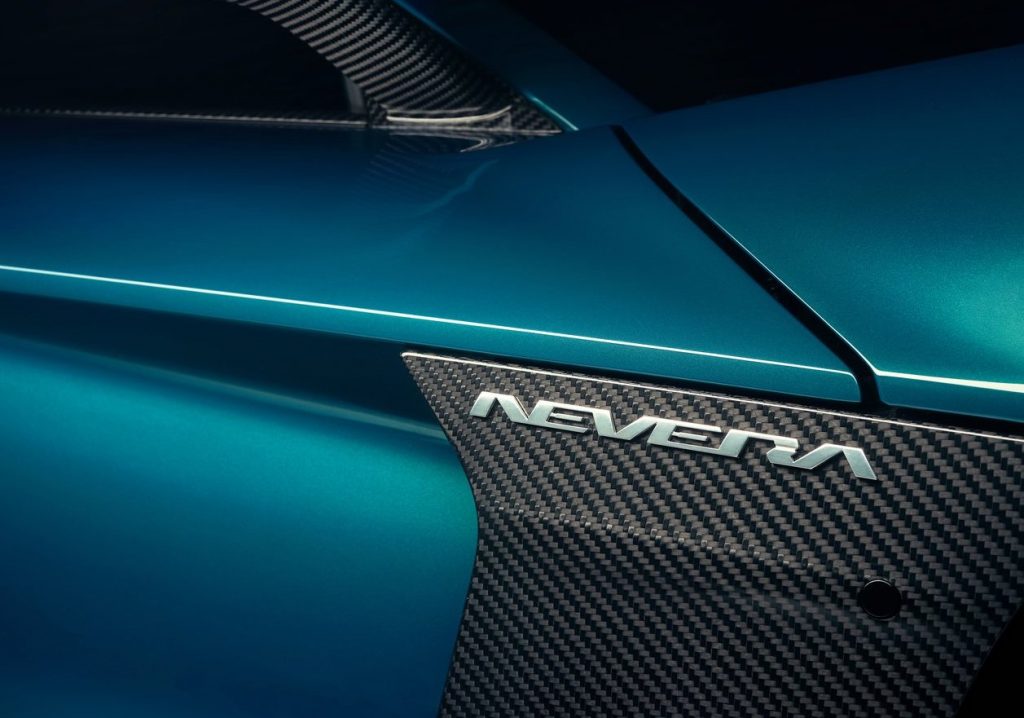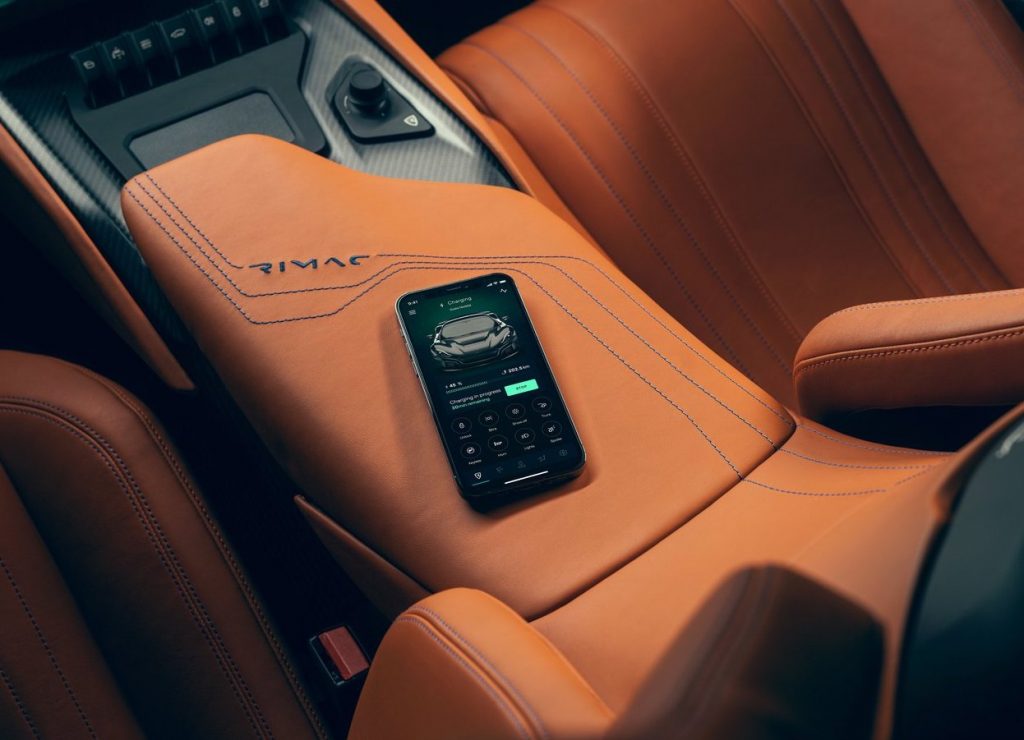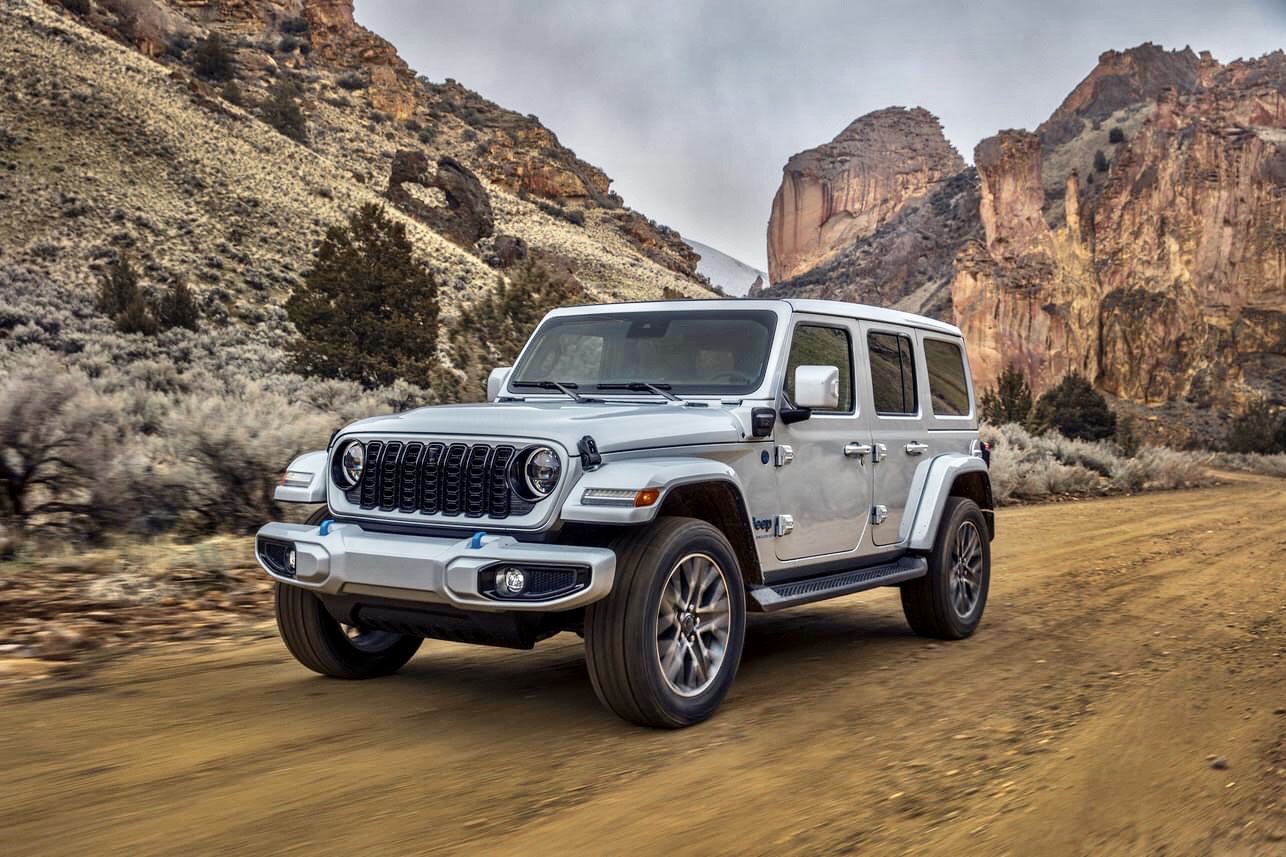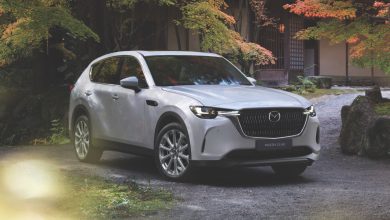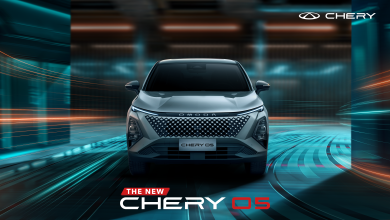The Rimac Nevera Is An Absolutely Bonkers EV Hypercar
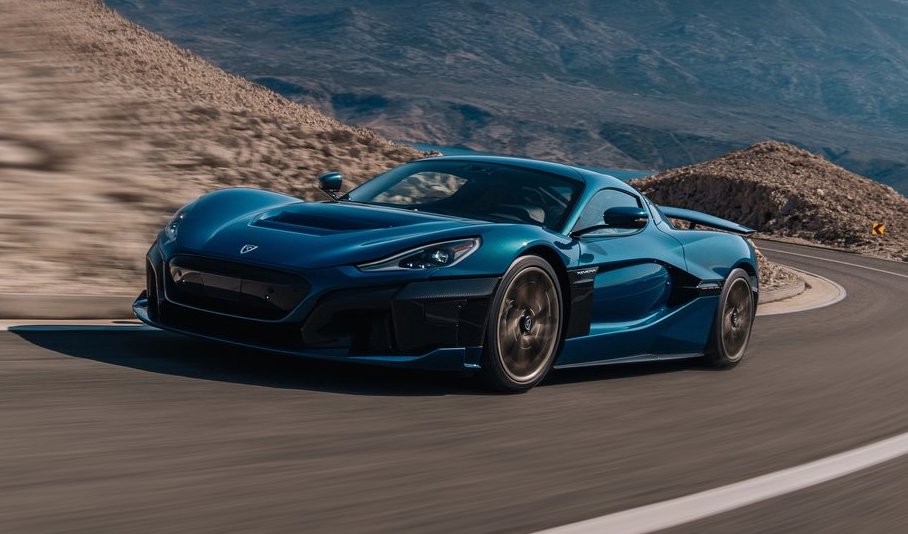
A title the 1914 hp Nevera earns with its 1.85 seconds 0-60 mph time, and its V-Max of 412 km/h
When naming countries where the best hypercars come from, Croatia isn’t perhaps the first destination that would typically come immediately to mind. Rimac Automobili however has long since sought to change this, and its newly launched Nevera all-electric hypercar is probably the best case yet for it has to do just that.
The absolutely bonkers specs associated with this Nevera is totally worth savouring in its entirety with a read of the press release found further down below. For now though, here are just the main technical highlights that serves as just a taster of what makes this Croatian all-electric hypercar so — for the lack of a better word — awesome.
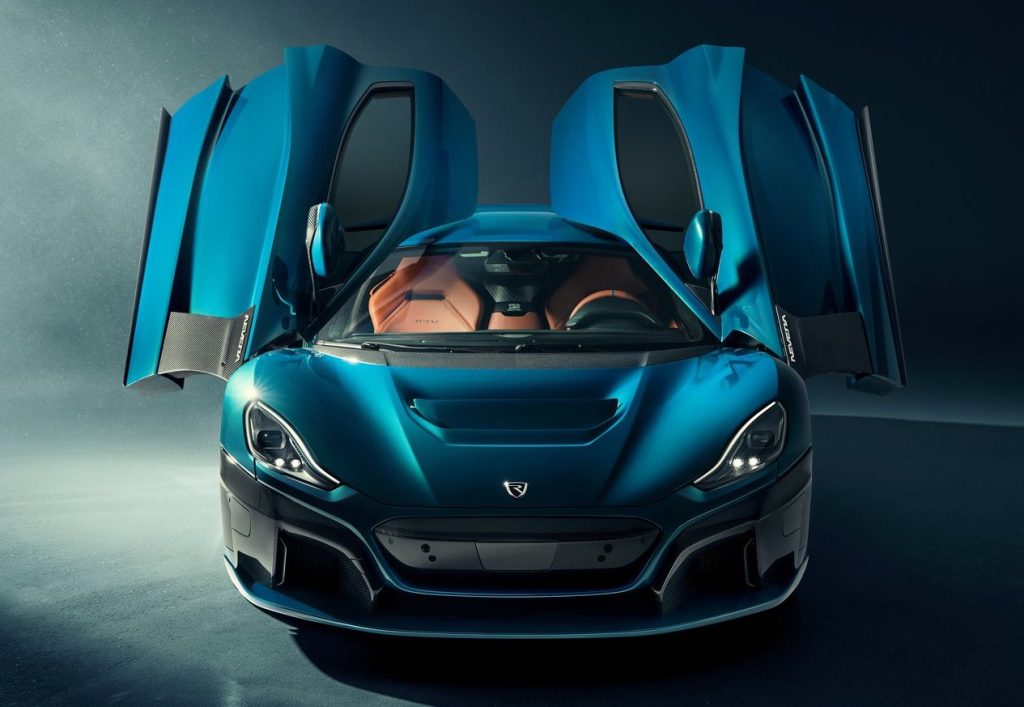
Powertrain & Performance
Bearing a Croatian name denoting an unexpected Mediterranean storm, the Nevera could well be claimed to be as powerful as this immense force of nature. A claim that is based on its combined output of 1,914 hp and 2,360 Nm of torque from the four motors driving each wheel of the Rimac.

With such staggering power figures therefore, this new Rimac’s performance figures should be equally incredulous too. Though that is probably even underselling what will most likely to be the fastest accelerating production car in the world, with a targeted 0-60 mph (0-96 km/h) time of just 1.85 seconds.
For those who have popped their brave pills and are willing to step on it just that little bit longer meanwhile, acceleration from 0-100 mph (0-161 km/h) will take just 4.3 seconds and 0-186 mph (0-300 km/h) is dispatched within 9.3 seconds. In terms of other metrics, the Nevera will manage a record breaking quarter-mile time of 8.6 seconds before eventually topping out at 258 mph (412 km/h).

Battery & Chassis
Powering the Nevera is an H-shaped 120 kWh bespoke battery pack, which is claimed to produce up to 1.4 MW of power and yields a WLTP claimed range of up to 340 miles on a single charge. What is perhaps more impressive about this EV hypercar over here though is the fact that it can charge from 20% to 80% in just 18 minutes with a 350 kW charger, and 0-80% in 19 minutes with a 500 kW supply.
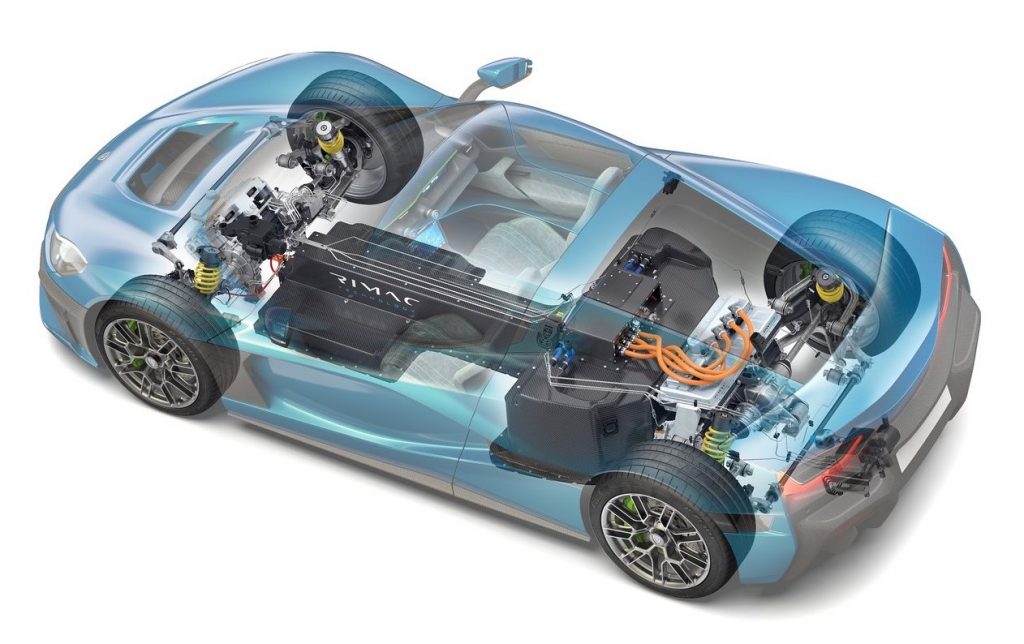
Rather interestingly too, the massive battery pack actually acts as a structural member that adds 37% more stiffness to the Nevera’s monocoque chassis. A chassis which is incidentally the largest single-piece carbon fibre structure used across the entire automotive industry, and is a major contributor to the Rimac’s comparatively light kerb weight (for an EV hypercar) of just 2,150 kg.

Steering & Brakes
Continuing onto the Nevera’s cornering capabilities, the big tech highlights in this department will be its a steer-by-wire system with varying levels of driver feedback available and Rimac’s All-Wheel Torque Vectoring 2 (R-AWTV 2) system. Replacing traditional Electronic Stability Program and Traction Control systems, this fancy bit of kit is touted to be making over 100 calculations every second in order to offer ‘the precise level of torque channeled through each wheel for ultimate stability and exceptional agility’.
As for bringing proceedings to a stop on the other hand, braking responsibility on the Nevera is primarily shared between the regenerative braking capabilities of the motor and a set of six-piston callipers clamping onto 390 mm Brembo carbon-ceramic discs. Calibrated to react to the state of the battery and powertrain, this brake-by-wire system is also assisted by that massive rear wing which acts as an air brake when required.
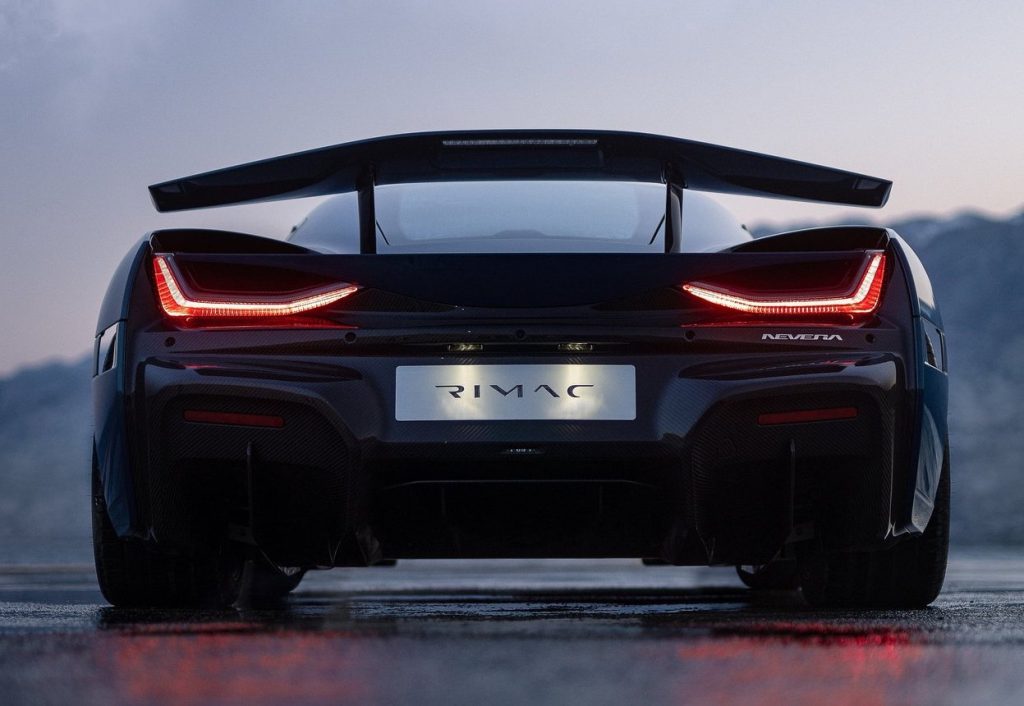
Exterior & Design
The massive spoiler round the back however isn’t the only movable aerodynamic piece on the Nevera, as the underbody flap, front bonnet and Venturi-style rear diffuser are all capable of moving independently according to airflow too. This in turn enables this particular Rimac to achieve a drag coefficient of 0.28 in ‘low drag’ mode, while boosting downforce by 326% when ‘high downforce’ mode is selected.
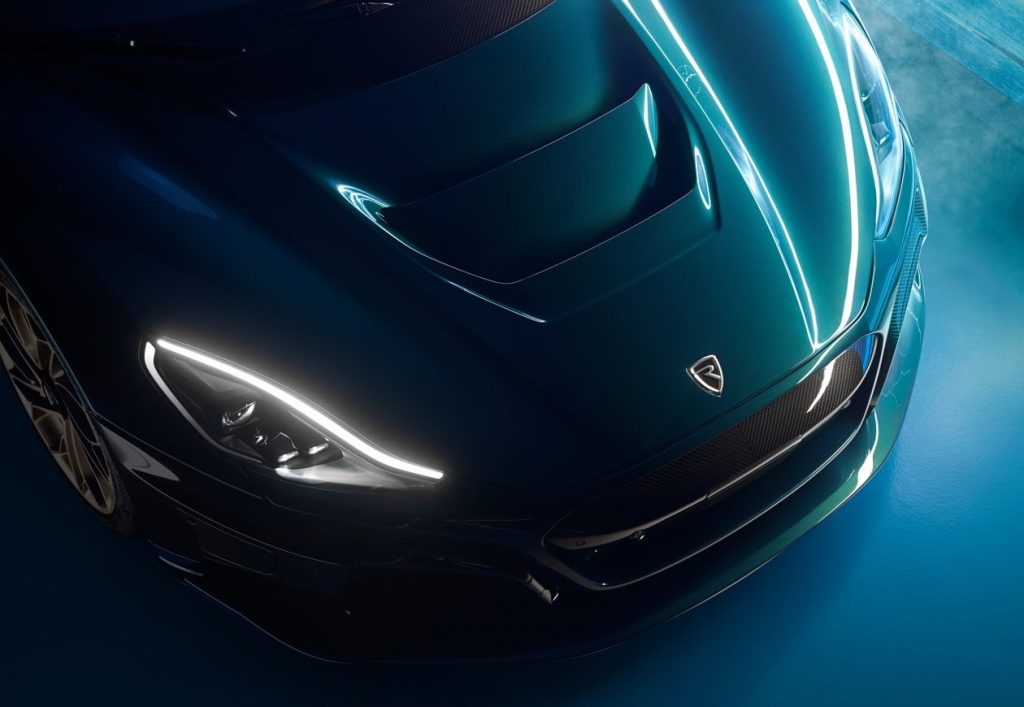
Now as for the overall design of the Nevera, it looks largely similar to the C_Two concept car that it was developed from after being first shown off at the 2018 Geneva Auto Show. Arguably not the most flashy of the ever-growing EV hypercar fraternity out there, this is nevertheless intentional as Rimac has envisioned its latest offering to be more of a grand tourer instead of an out-and-out track weapon.
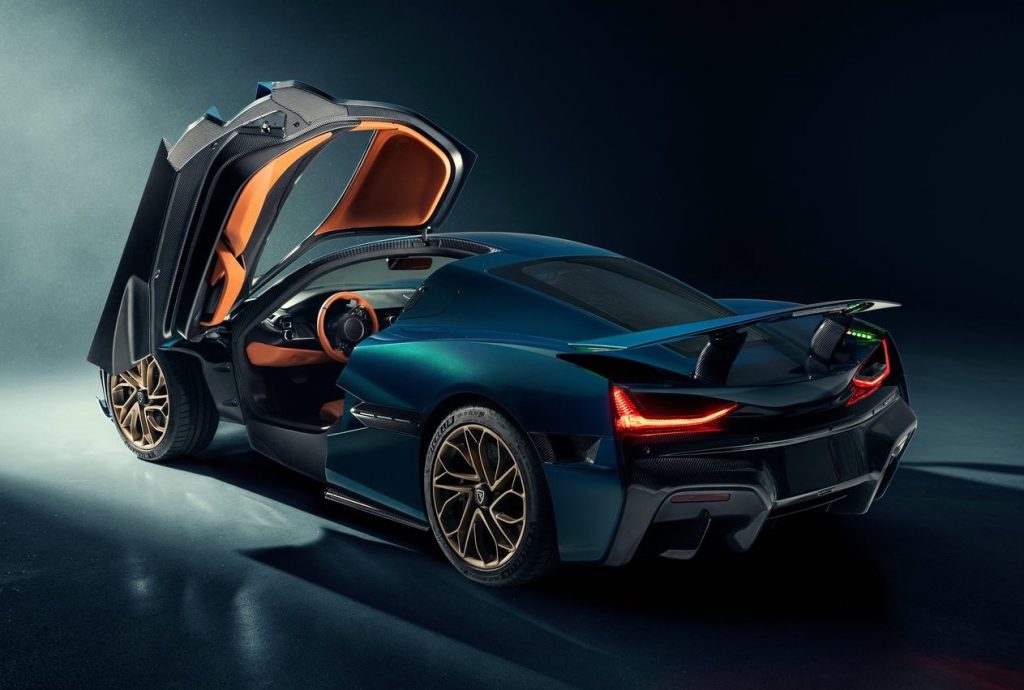
Interior & Technology
To that end then, the minimalist two-seater cockpit of the Remera has lashings of leather and billet aluminium interspersed within the primarily carbon fibre interior trim. There are also three TFT displays to be found within the cabin of the Rimac that serve as a digital instrument cluster, a central infotainment touchscreen and a telemetry screen specifically for the passenger.
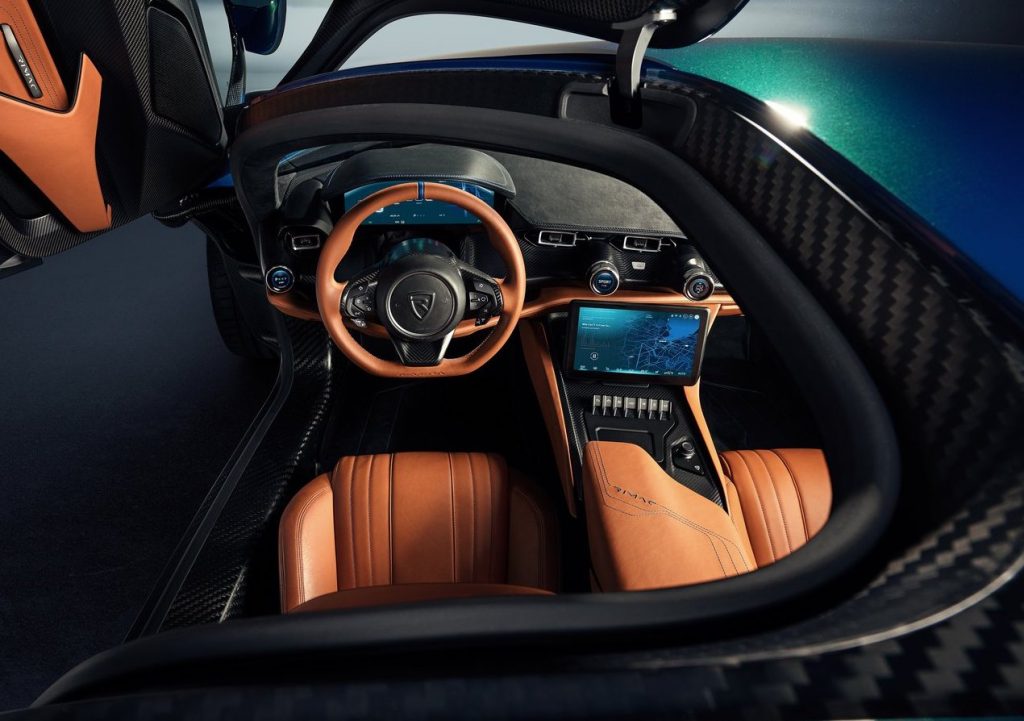
This trio of screens though are just the tip of the tech iceberg, as the Nevera has within it too 12 ultrasonic sensors, 13 cameras, six radars and an NVIDIA Pegasus operating system that ties all of these components together. All of which is utilised when this Rimac’s AI Driver Coach programme is selected.
A world’s first, Rimac claims that this artificial-intelligence-based tool ‘overlays selected race circuits in real-time, offering clear and precise audio and visual guidance, to enable drivers to perfect their racing lines, braking and acceleration points and steering inputs’. Unfortunately however, the AI Driver Coach feature will only be enabled by an over-the-air software update coming in 2022.
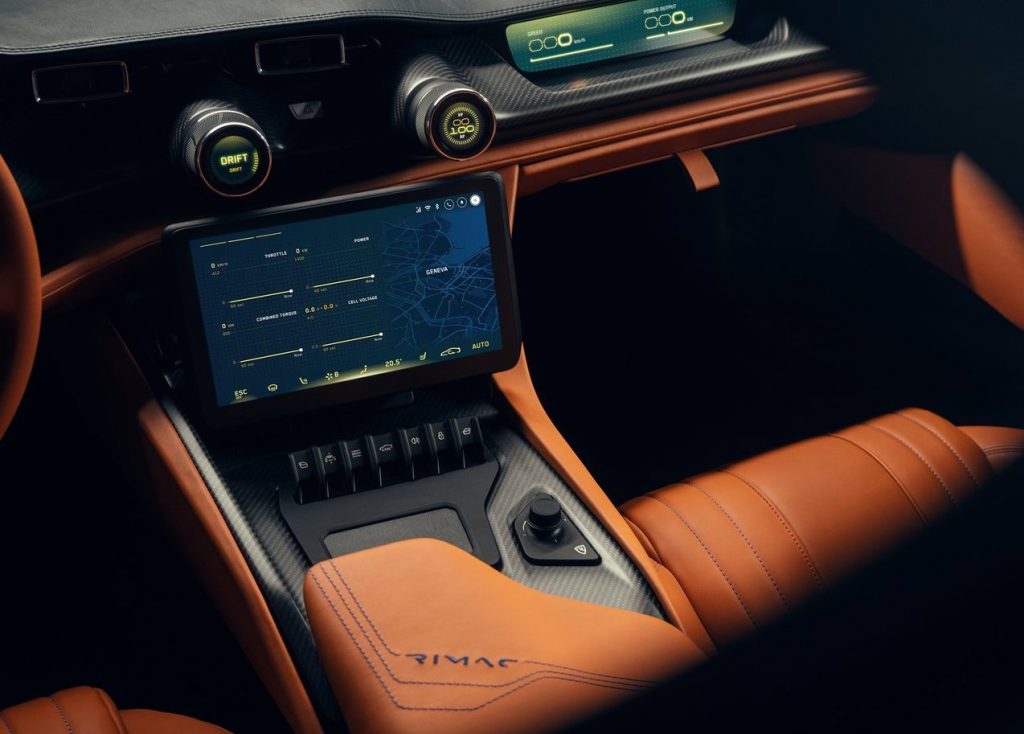
Production & Price
Prices of the Nevera will begin from €2 million (RM 10 million), and Rimac has said it will only be building a total of 150 units at its Croatian headquarters in Zagreb. Each prospective owner will be invited over to design his or her car to their exacting requirements, with every car to be personally tested and signed off by the company founder Mate Rimac.
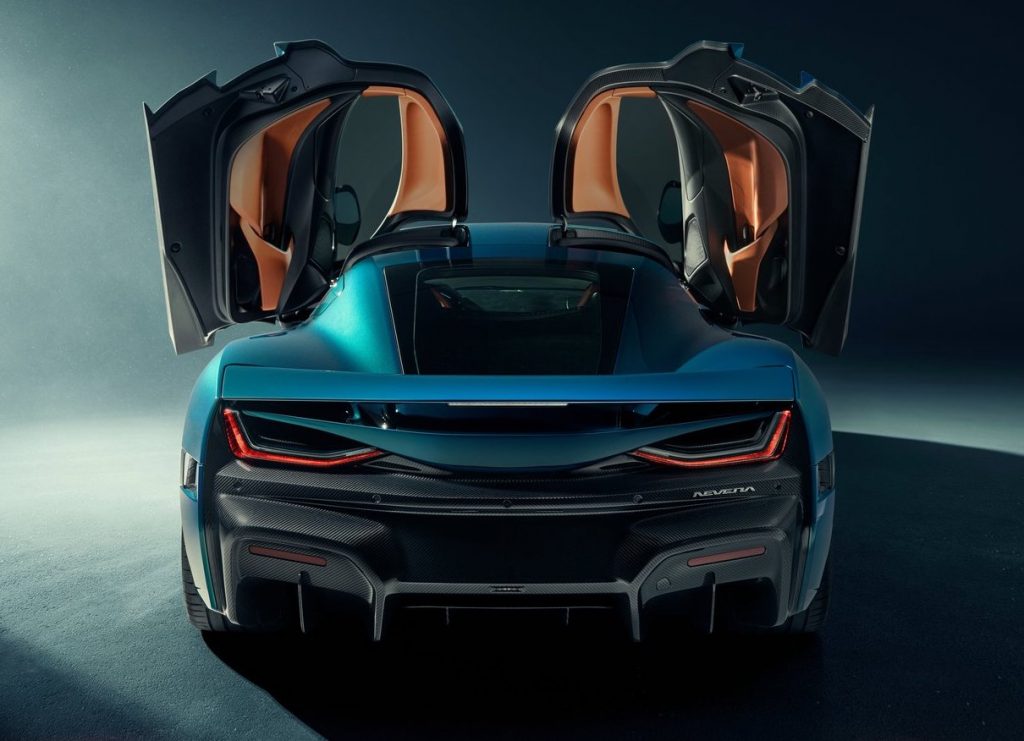
PRESS RELEASE: Today, hypercar manufacturer and electric technology specialist, Rimac Automobili, unveiled the production version of the C_Two, now becoming the Nevera, an all-electric, 1914hp, 258mph, €2m hypercar designed and engineered to unleash an unprecedented level of performance.
The Nevera is the production-ready iteration of the Rimac C_Two concept car, which was revealed at the International Geneva Motor Show in 2018. Since then, Rimac’s engineers have refined their new flagship on every level during an extensive development program, in the pursuit of the ultimate electric hypercar driving experience. With the majority of key components of the Nevera developed in-house at Rimac’s HQ in Croatia, all systems have been improved and enhanced since the initial prototypes to deliver on the ambitious performance targets set for at the beginning of the project in 2018.
“This is it. This is the car I had in mind when I embarked on the ‘impossible’ journey ten years ago. All our hard work has resulted in the Nevera – our record-breaking hypercar. This car was born to outperform, and to raise the bar, redefining the norm for performance cars. And not only in performance – but as an all-around package.
When we first revealed the C_Two, we set our targets extremely high. There was nothing else that could even come close to matching the car’s cutting-edge electric powertrain and extreme performance. But for us, that was only the starting point,” explains Mate Rimac, Founder and CEO of Rimac Automobili.
“Everyone at Rimac is driven by curiosity and a desire to push things to the absolute limit. With its combination of everyday use and 1914hp performance, the Nevera proves what is possible when there are no restraints placed on technology, development, or ambition. We have now unveiled a car that pushes the hypercar market to a higher level, we have utilized the full potential of the electric powertrain today, proving what we’ve always been saying – that electric hypercar, in the form of the Nevera, is beyond exciting, and that is as thrilling on the track, as it is cosseting crossing continents.”
“We will be making just 150 examples of the Nevera, every single unit crafted in Croatia from passion and admiration for cars.”
Underlining his own commitment to the project, Mate Rimac will personally test and sign off each of the Neveras, before they are delivered to customers from the company’s current production site on the outskirts of Zagreb, Croatia.
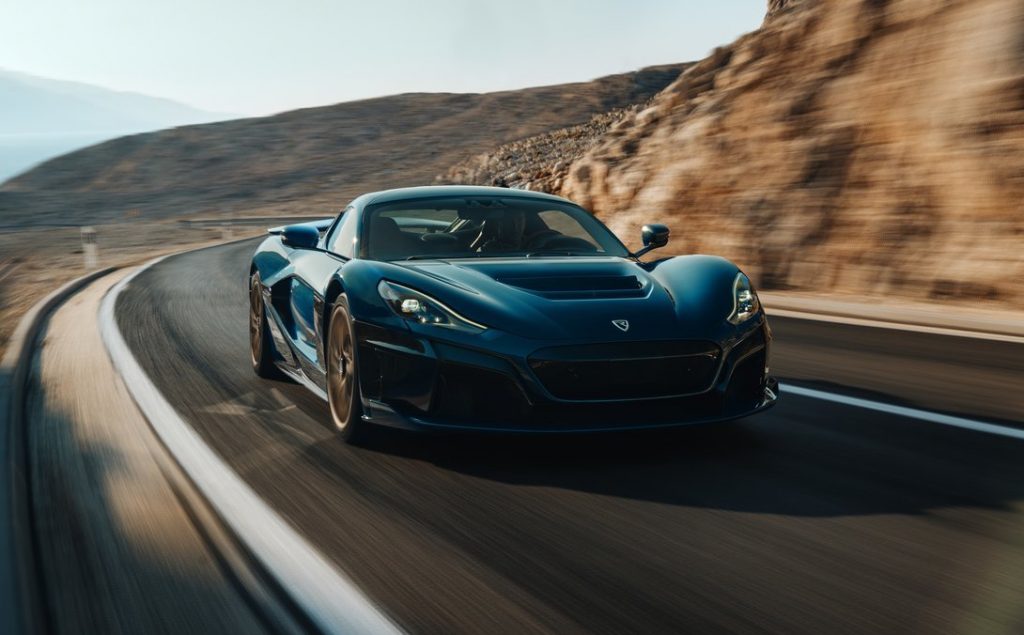
Named after a force of nature
Fittingly, the Nevera bears a proud Croatian name and one that truly reflects the prodigious performance the car can unleash in the blink of an eye. The name given by the locals to a quick, unexpected and mighty Mediterranean storm, that races across the open sea off Croatia, a nevera is extremely powerful and charged by lightning.
Appearing with exceptional speed and potency, Rimac’s next-generation hypercar shares the Nevera’s name and looks set to leave a similarly disruptive effect on the global hypercar market. And, like the force of nature it is named after, it is just as adept at transforming its character in an instant – from assured and comfortable grand tourer to ultra-focused performance machine.

Form follows function
Rimac favors lean and effective engineering at every stage, and that philosophy is exemplified in the form-follows-function nature of the Nevera’s timeless, elegant design. It is applied to every single detail, including Rimac’s signature ‘cravat’ feature, which is incorporated into its flanks.
“Since the 17th Century, the necktie has provided a symbol of Croatian strength and identity, and we first paid tribute to it on our Concept_One hypercar in 2011,” reveals Rimac Director of Design, Adriano Mudri ‘And, like every element of the car’s design, it is there to provide a key function of the Nevera’s performance, serving as an air intake for the rear cooling systems.”
A comprehensive raft of changes to the Nevera’s bodywork, air diffusers and intakes has delivered a 34 per cent improvement in aerodynamic efficiency over the early prototypes. The profile of the bonnet, the shape of the pillars and the design of the diffusers, splitters and radiators have all been intensively analysed and refined to improve airflow and downforce. Inlets and cooling channels have been painstakingly developed to increase the cooling efficiency of both the brake and powertrain systems, resulting in a 30 per cent improvement at low speeds and a seven per cent enhancement at high speeds.
Rimac has also created numerous new innovative active aerodynamic elements to elevate the Nevera’s cooling, performance, stability, and efficiency abilities. The front bonnet profile, underbody flap, rear diffuser and rear wing can each move independently, driven by complex algorithms that provided the optimum aerodynamic configuration for every driving situation. Switching from ‘high downforce’ to ‘low drag’ mode reduces aerodynamic drag by 17.5 per cent to create a 0.3 coefficient of drag. Changing back into ‘high downforce’ mode increases downforce by 326 per cent.
Despite incorporating a wealth of active aerodynamic elements, as well as many cameras and sensors that enable the Driver Coach feature, the Nevera’s body design remains a coherent graphic. It combines both the drama and beauty of a hypercar and appears simultaneously shaped by the air and forged with technology. The stunning butterfly doors elegantly carve away from the car’s wide sill as they open, creating a generous space for ease of entry and egress.
Lightweight, forged alloy wheels feature a unique aerodynamic design that channels cooling air to the Brembo carbon-ceramic braking system and ensures smooth airflow down the car’s flanks.
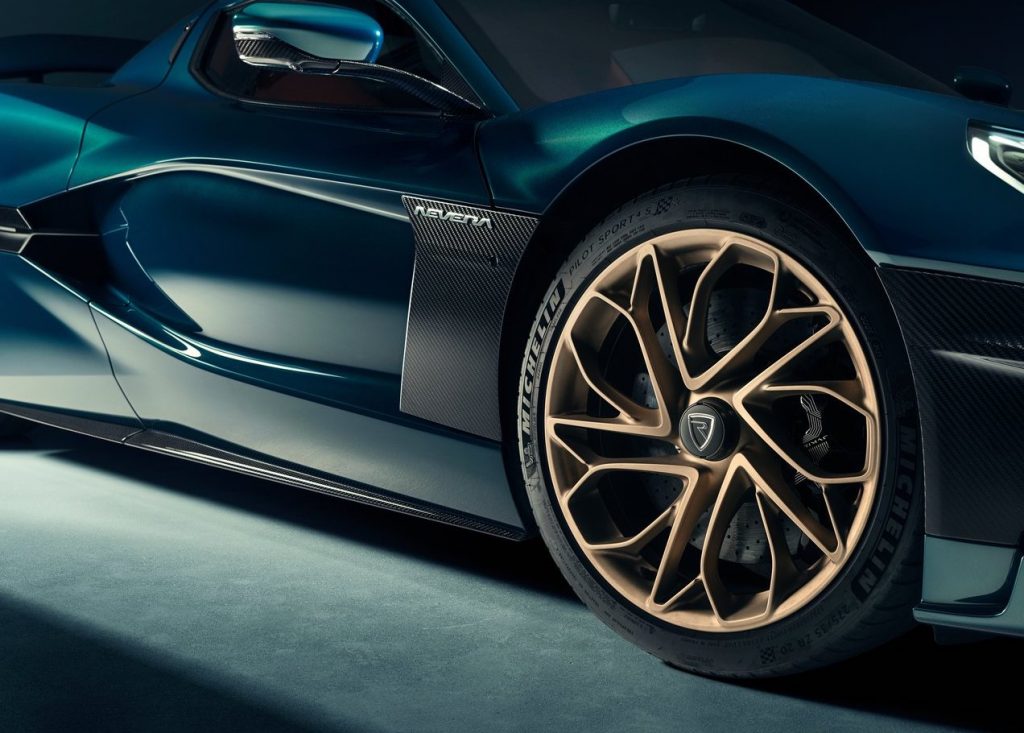
World’s most advanced monocoque construction
Nevera’s groundbreaking monocoque, developed by the former C_Two Chief Engineer Daniele Giachi, includes a bonded carbon roof, integrated structural battery pack and rear carbon subframe, is forming the largest single carbon fibre piece in the entire automotive industry. Weighing less than 200kg and utilising 2200 carbon fibre plys and 222 aluminium inserts, the monocoque encases the car’s battery to form a compact yet incredibly strong structure with a torsional stiffness of 70.000 Nm/degree. The level of unmatched strength and safety this provides has contributed to the Nevera meeting strict global homologation standards, and delivering the most rigid structure of any car ever made.
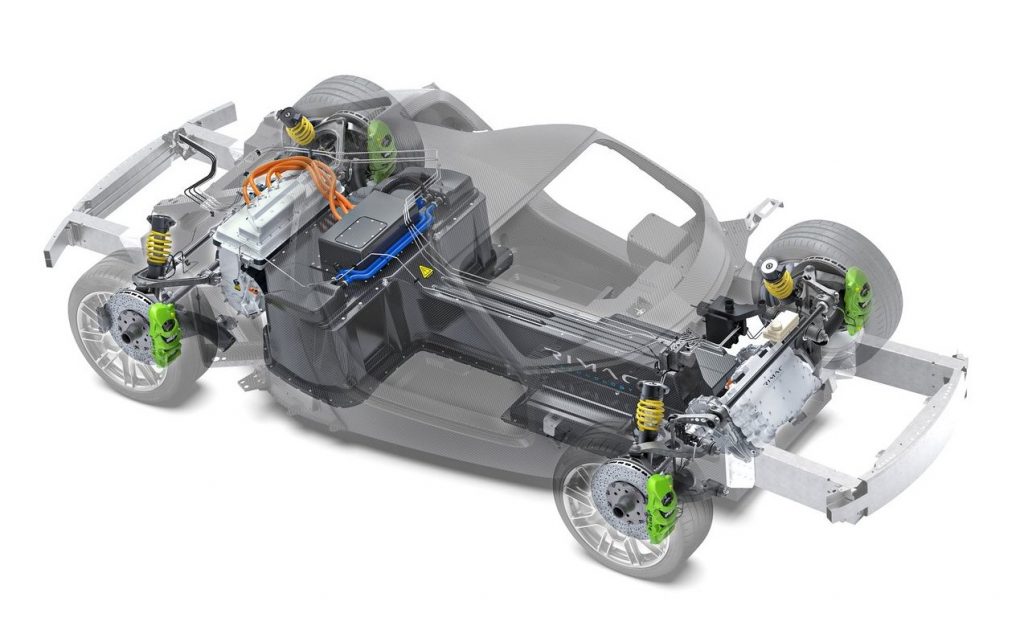
Driving the future
The key to the Nevera’s exceptional performance is Rimac’s pioneering electric powertrain. Every component of the Nevera’s electric powertrain has been exhaustively reworked since its inception to deliver more torque, greater performance and enhanced efficiency.
The unique H-shaped, liquid-cooled, 120kWh, 6960-cell battery was designed from scratch by Rimac and sits at the very heart of the Nevera. Capable of producing 1.4MW of power, the Lithium/Manganese/Nickel battery also forms an integral part of the car’s core, adding 37 per cent structural stiffness to the carbon fibre monocoque. The battery’s optimum positioning low and central within the car’s floor contributes to an ultra-low centre of gravity. This helps create an excellent 48/52 front/rear weight distribution and the best possible handling balance.
Developments of the advanced battery cooling system have made it even more efficient since the introduction of the C_Two, enabling more power to be delivered for greater periods. Four bespoke surface-mounted permanent magnet motors drive the Nevera’s four wheels individually. Together, they enable 1914hp and 2360Nm of torque, which is triple the output of a ‘conventional–engined’ supercar. The front and rear wheels are each connected to a pair of single-speed gearboxes.
Capable of instantly summoning maximum torque from the first moment, the Nevera’s electric motors are 97 per cent efficient – compared with 40 per cent for the most effective internal combustion engines – and completely maintenance-free throughout their operating life.
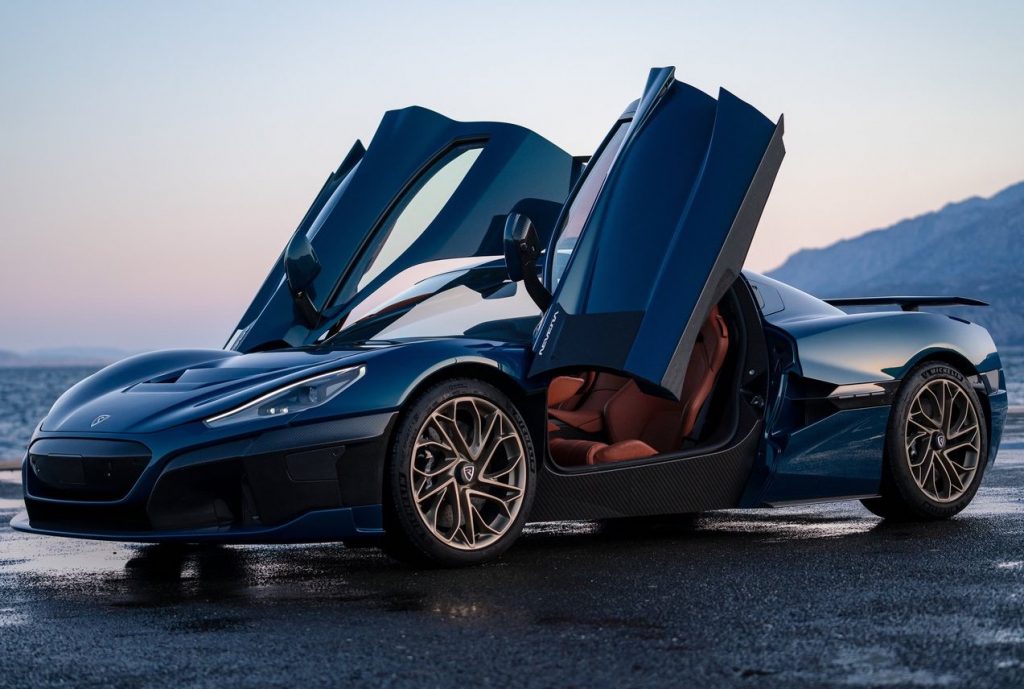
Out of this world acceleration – beating the ambitious targets
With the ability to sprint to 60mph in 1.85 seconds and continue the acceleration all the way to a 412 km/h (258mph) top speed, the Nevera opens up a new dimension in hypercar performance. Accelerating from rest to 161 km/h (100 mph) requires just 4.3 seconds and it maintains its eye-widening acceleration throughout a full-throttle cycle, achieving 186mph (300 km/h) from rest in 9,3 seconds, shredding a whole 2,5 seconds from the initial targets. Finally, it achieves a record-breaking 8,6 seconds quarter-mile time.
Perfect power delivery, impeccable stopping power
Rimac’s All-Wheel Torque Vectoring 2 (R-AWTV 2) system replaces traditional Electronic Stability Program and Traction Control systems to further bolster grip and traction. Meanwhile, the Nevera’s R-AWTV 2 system enables infinitely variable dynamic responses to road and track conditions by calibrating the amount of torque supplied to each wheel. R-AWTV 2 calculates the precise level of torque to channel through each wheel for ultimate stability and exceptional agility. Both predictive and responsive, R-AWTV reads the road and makes over 100 calculations per second to tailor the level of torque to achieve the desired driving style.
“Our torque-vectoring enables new level of drivetrain calibration,” explains Miroslav Zrnčević, Rimac Test and Development Driver, and depending on the driving mode selected, the R-AWTV 2 technology can enable the Nevera to be drifted sideways or provide optimum levels of all-wheel-drive grip, traction and safety – no matter how challenging the road and weather conditions. Thanks to a four-individual-motor drivetrain, the driver can also change the torque distribution, and personalize the performance delivery even further, for a completely bespoke drive – ranging from front to rear wheel drive biased car. ”
The Nevera is also equipped with cutting-edge braking technology. A complex electro-hyrdaulic brake booster with brake pedal feel simulator distributes the braking force between the friction brakes and electric powertrain, depending on the battery, powertrain and brake state. For instance – it dissipates kinetic energy through the friction brakes if the battery is close to its thermal limits, or activates more regenerative braking in case the friction brakes are hot. All those transitions should remain in the background, not noticeable to the driver. This enables the Nevera to make the highest use of regenerative braking of any other car on the market now. In addition to a maximum range-enhancing regenerative braking of 300 kW provided by the electric motors, substantial stopping power comes from 390 mm Brembo CCMR carbon-ceramic brake discs and six-piston callipers. Combined they provide consistent, fade-free and exceptionally powerful braking, even when the car is subjected to extreme forces on the track.
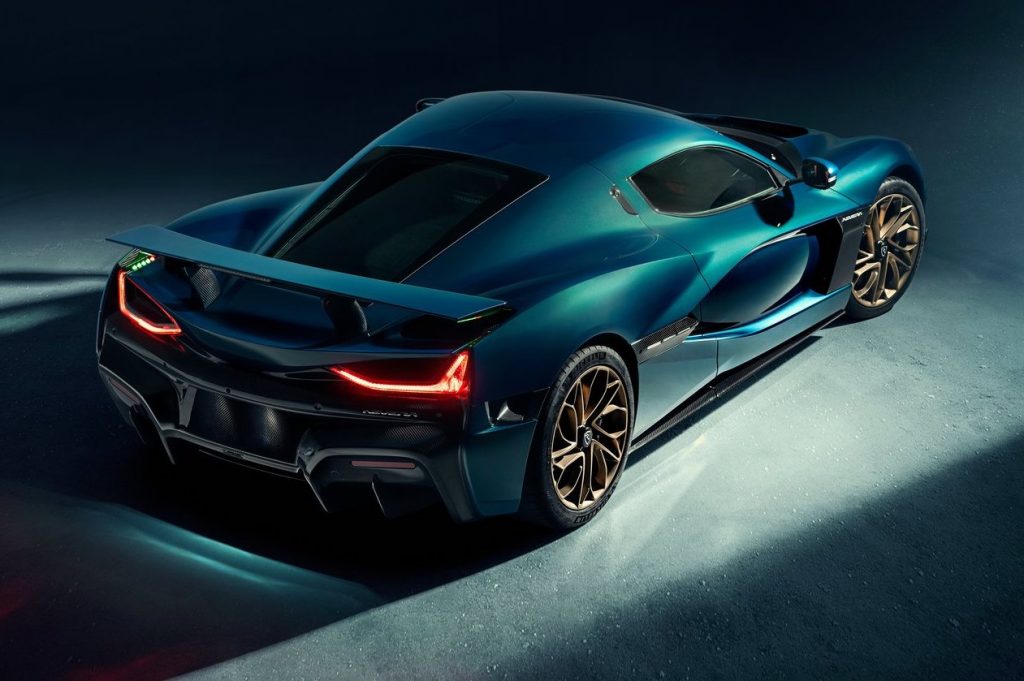
Relaxed grand tourer with track attack precision
Double wishbone suspension with electronically controlled dampers and active ride height adjustment provides a combination of a smooth and comfortable ride, exemplary body control and ultra-agile handling.
Further emphasising Rimac’s technology-first approach, the Nevera utilises the very latest electric power steering with steer-by-wire function, enabling adaptive driver-feedback, depending on the drive mode. Additionally, it works as a drive-by-wire system when in Driver Coach mode to demonstrate optimum racing lines and vehicle control to the driver.
Rimac’s versatile and responsive R-AWTV 2 system enables drivetrain calibration for the Nevera to facilitate any driving style through seven different driving modes.
For a truly engaging drive on the road, SPORT mode sharpens the response of the throttle, brakes, suspension and steering, while DRIFT mode supplies more torque to the rear wheels to accentuate oversteer and help hold the car in a controlled power slide on the track. COMFORT mode strikes a perfect balance between a relaxing ride, efficiency and driving pleasure, while RANGE mode enables the Nevera to achieve maximum mileage from each battery charge. In expert hands, TRACK mode sets the Nevera to full, unrestrained configuration to help drivers exploit the car’s full potential. Finally, two CUSTOM modes enable drivers to access their personal, pre-selected performance characteristics.
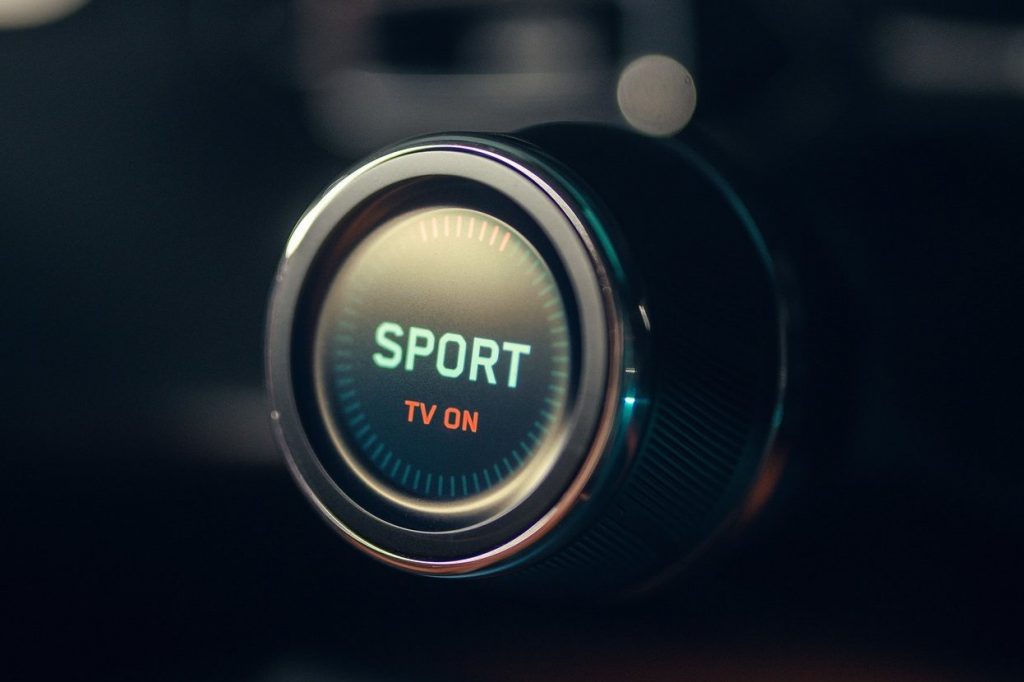
World’s first AI Driving Coach
To enable drivers of all abilities to extract maximum performance from the Nevera and help them further develop their track driving skills, Rimac has developed the world’s first AI (Artificial Intelligence) Driver Coach. Adding a new, immersive dimension to the driving experience, Nevera’s Driver Coach evaluates performance and provides guidance to optimize and enhance the driver’s on-track performance.
By accessing 12 ultrasonic sensors, 13 cameras, 6 radars, and the very latest NVIDIA Pegasus operating system, the Rimac Driving Coach adds an additional, immersive experience behind the wheel. The system overlays selected race circuits in real-time, offering clear and precise audio and visual guidance, to enable drivers to perfect their racing lines, braking and acceleration points and steering inputs.
The Driver Coach feature will become available in 2022 and launched via over-the-air upgrades to already delivered Nevera cars whose hardware is ready for this unique feature.
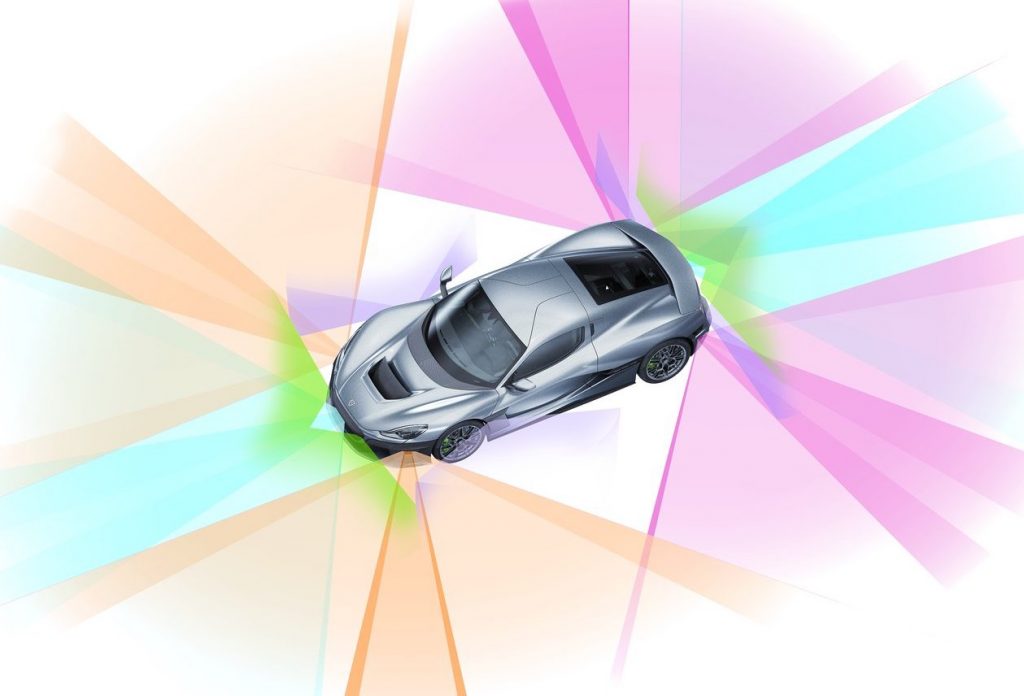
Minimalist design cabin, maximum comfort and control
With space for two occupants in full race regalia and their luggage, Nevera is as much a capable grand tourer as it is a performance hypercar. Digital screens soak up needless toggles and switches, leaving only essential tactile controls, giving more space to enjoy Nevera’s carefully designed interior.
The cockpit features a trio of high-definition TFT screens, which present as much, or as little, information as the user requires. Configured for both track driving and comfort, the layout of the cockpit is divided into two zones. The focus of the top segment is entirely placed on driving pleasure and performance, while the lower part houses the infotainment system, comfort controls and driving data.
Tactile billet aluminium rotary controls and switches – including three displays with rotating control – provide a resolutely analogue feel, tailored to enable the driver to utilise the cutting-edge digital technology in an even more engaging manner. From the cockpit, the driver can monitor every aspect of the car’s performance with real-time telemetry – downloadable to a laptop or smartphone for later review.

Connectivity and Mobile App
Rimac M2M system delivers a wealth of real-time data to the manufacturer as well as the owner. While the user is connected to the vehicle through our intuitive mobile app, the manufacturer receives anonymised performance data.
Using intuitive mobile applications developed in-house at Rimac, Nevera owners can track live data, such as GPS location, charging speed and battery status while also using it to analyse driving performance, metrics and map previews on Android & iOS.
Near-unlimited personalisation programme
No two Neveras will leave the Rimac factory looking the same or bearing the same specification, thanks to customers’ ability to choose from a comprehensive range of bespoke trims and material options. In addition to the company’s premium individual personalization program, Rimac will offer its flagship in various editions: GT, Signature, Timeless or the customers can choose to go Bespoke.

Ultimate customer experience
As part of the customer journey, each Nevera owner will be invited to Croatia to design his or her car to their exacting requirements. The Nevera itself will be exclusively available through Rimac’s global dealer partners network, taking in 19 sites and many of the world’s major cities across Europe, North America, Latin America, Europe, Middle East and Asia.
